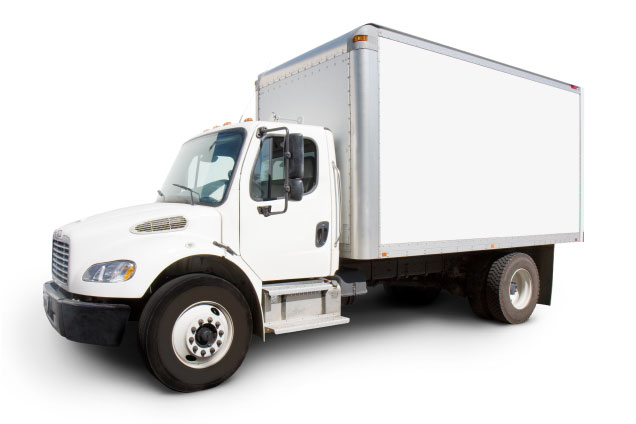Storage Strategies from Experts: Protect Your Sofa
Posted on 17/05/2025
Storage Strategies from Experts: Protect Your Sofa
When it comes to moving or decluttering your home, one of the most significant pieces of furniture that warrants special attention is your sofa. Whether you're relocating, renovating, or just need to store your couch temporarily, implementing the right sofa storage strategies is essential to maintain its quality and longevity. In this comprehensive guide, industry experts share best practices and actionable tips to ensure your sofa is protected while in storage.

Why Proper Sofa Storage Matters
Sofas are not just another piece of furniture -- they are often the centerpiece of a living room and can represent a substantial investment. Improper storage can result in:
- Fabric deterioration due to dust, moisture, and pests
- Frame warping or damage from pressure and handling
- Unpleasant odors and mold growth
- Permanently embedded stains or discoloration
To protect your sofa during storage, it's crucial to follow expert-recommended storage solutions and preventative measures.
Pre-Storage Sofa Preparation
1. Thorough Cleaning
The first step in sofa storage preparation is to ensure that your couch is clean and free from debris. Dirty cushions and leftover crumbs can attract pests or cause stains to set during storage.
- Vacuum every crevice, including under cushions and around seams.
- For leather sofas, wipe the surface with a gentle cleaner and apply a leather conditioner.
- For fabric sofas, consider steam cleaning or using a fabric-safe upholstery cleaner to lift stains and remove odors.
Expert Tip: Allow your sofa to dry completely before storing to prevent mildew and mold growth.
2. Disassemble Where Possible
If your sofa allows for it, disassemble removable parts such as legs, arms, or cushions. This makes the storage process more manageable and minimizes the risk of breakage.
- Pack smaller parts separately in labeled bags.
- Wrap delicate pieces in bubble wrap or moving blankets for added protection.
3. Protective Wrapping
Proper wrapping is key to sofa storage success. It helps keep dust, moisture, and pests at bay. However, using the wrong materials can trap moisture or abrade sensitive finishes.
- Use breathable covers like cotton or specially designed furniture covers.
- Avoid plastic wrap for long-term storage, as it can trap moisture and lead to mildew.
- For leather sofas, secure a soft, dry covering to prevent scratches and allow air circulation.
Choosing the Right Storage Environment
Climate-Controlled Storage Units
Experts agree that the best way to protect your sofa in storage is to use a climate-controlled storage facility. Fluctuating temperatures and humidity can wreak havoc on both fabric and leather.
- Maintains a consistent temperature and humidity level
- Prevents wood warping, fading, and mold or mildew formation
Pro Tip: If a climate-controlled unit is unavailable, place moisture absorbers (like silica gel packs) near the sofa, but away from direct contact with upholstery.
Elevate Your Sofa
Never place your sofa directly on the storage unit floor. This exposes it to dust, dampness, and pests.
- Use wooden pallets or blocks to elevate your sofa off the ground.
- This facilitates air circulation and acts as a barrier against moisture that could seep in from the floor.
Proper Placement Within the Storage Unit
The position of your sofa inside the storage space can significantly impact its preservation.
- Do not pile items on top of your sofa, even if it seems sturdy.
- Leave some space between your sofa and the storage unit wall to promote airflow and prevent condensation buildup.
- Store the sofa upright if space is tight, but make sure it is properly secured to avoid tipping.
Expert Storage Strategies for Different Sofa Materials
Fabric Sofas
Fabric is more susceptible to dust and moisture. To protect fabric sofas in storage:
- Use cotton drop cloths or specially made polyester sofa covers.
- Place cedar blocks nearby to deter insects and absorb minor humidity.
- Never use plastic for prolonged storage -- it causes trapped moisture.
Leather Sofas
Leather requires a bit more attention, as it's sensitive to both heat and humidity.
- Apply leather conditioner before wrapping to maintain suppleness.
- Wrap with acid-free, dry cloth or breathable covers only.
- Keep away from windows where sunlight might sneak in and fade the leather.
Sectional and Recliner Sofas
Modular or mechanical sofas present unique storage challenges:
- Disassemble into modular pieces as much as possible.
- Wrap and label all mechanical parts to prevent loss or confusion when reassembling.
- Don't store heavy boxes or furniture on top, as it can damage internal mechanisms.
Long-Term vs Short-Term Sofa Storage Solutions
Short-Term Storage
If you're storing your sofa for a few weeks to a couple of months:
- A breathable fabric cover should suffice.
- Avoid direct sunlight and keep the area well-ventilated.
- Check every few weeks for signs of dust or pests.
Long-Term Storage
Longer storage durations require more robust sofa protection strategies:
- Opt for climate-controlled storage, especially in regions with high humidity or temperature swings.
- Position silica gel packs or dehumidifiers in proximity (without direct contact).
- Inspect every 2-3 months for any emerging issues such as air leaks, moisture, or pests.
Pest and Odor Prevention Tips
Protect Against Pests
Mice, moths, and other pests can destroy a sofa's fabric, foam, and even its wooden frame.
- Store your sofa in a well-maintained facility with pest control measures.
- Use natural pest deterrents like cedar, lavender sachets, or peppermint oil nearby.
- Seal the cover securely but allow some airflow to deter insects.
Combat Odors
Strong odors can develop from humidity or residual spills. Here's how to minimize the risk:
- Ensure furniture is completely dry before wrapping.
- Insert an open box of baking soda or activated charcoal bags nearby to absorb odors.
- After retrieval from storage, air out your sofa outdoors before bringing it back inside.
How to Move Your Sofa to Storage: Best Practices
Lift Carefully and Use Proper Equipment
It's easy to damage a sofa's frame during a move, especially if it's large or awkwardly shaped.
- Always lift from the base -- never grab cushions, arms, or legs.
- Use furniture dollies or sliders for heavy or bulky couches.
- Enlist help; don't move large sofas alone, as you could injure yourself or the sofa.
Avoid Tight Bends and Doorways
Plan your route carefully to prevent scraping or squeezing your sofa, which can cause rips or scratches.
- Measure hallways and doors in advance to ensure your sofa will pass through easily.
- If necessary, remove doors or secure protective padding along the route.
Retrieving and Unpacking Your Stored Sofa
How to Ensure a Safe Unpacking Process
After a period in storage, you'll want your sofa to look and feel just as good as when you put it away.
- Unwrap with care; avoid scissors that may snag upholstery.
- Let the sofa air out for at least a day before use, if possible.
- Check all joints, legs, and hardware before reassembling.
- Wipe down with an appropriate cleaner for fabric or leather to renew its freshness.

Frequently Asked Questions About Sofa Storage
- Is it safe to store a sofa upright? Yes, but only if it's well-supported and there's no pressure on the arms or back. Pad the upright edge well.
- Can I store my sofa in a garage? Only for brief periods, as garages are rarely climate-controlled and often humid.
- What's the best wrap for sofa storage? Breathable cotton or polyester covers -- avoid plastic for prolonged use.
- Should I clean my sofa again after storage? Yes. Dust and odors can settle during storage, so a fresh cleaning is recommended.
Final Thoughts: Experts' Tips for the Best Sofa Storage Strategies
Your sofa deserves proper care, especially during periods when it's out of use. By implementing these sofa protection and storage strategies:
- You'll extend the lifespan of your furniture
- Preserve its comfort and aesthetic appeal
- Avoid costly repair or replacement expenses
Always remember to clean, wrap, and store wisely -- and consult your storage facility for any specific requirements. With the right steps, you can protect your sofa in storage and enjoy it for years to come, regardless of what life brings your way.
Further Reading
- Professional Furniture Storage Tips
- Expert Storage Strategies for All Furniture
- How to Store Furniture the Right Way
With this guide, your quest to store a sofa safely is backed by proven expertise. Take no shortcuts -- your cherished sofa will thank you later!





